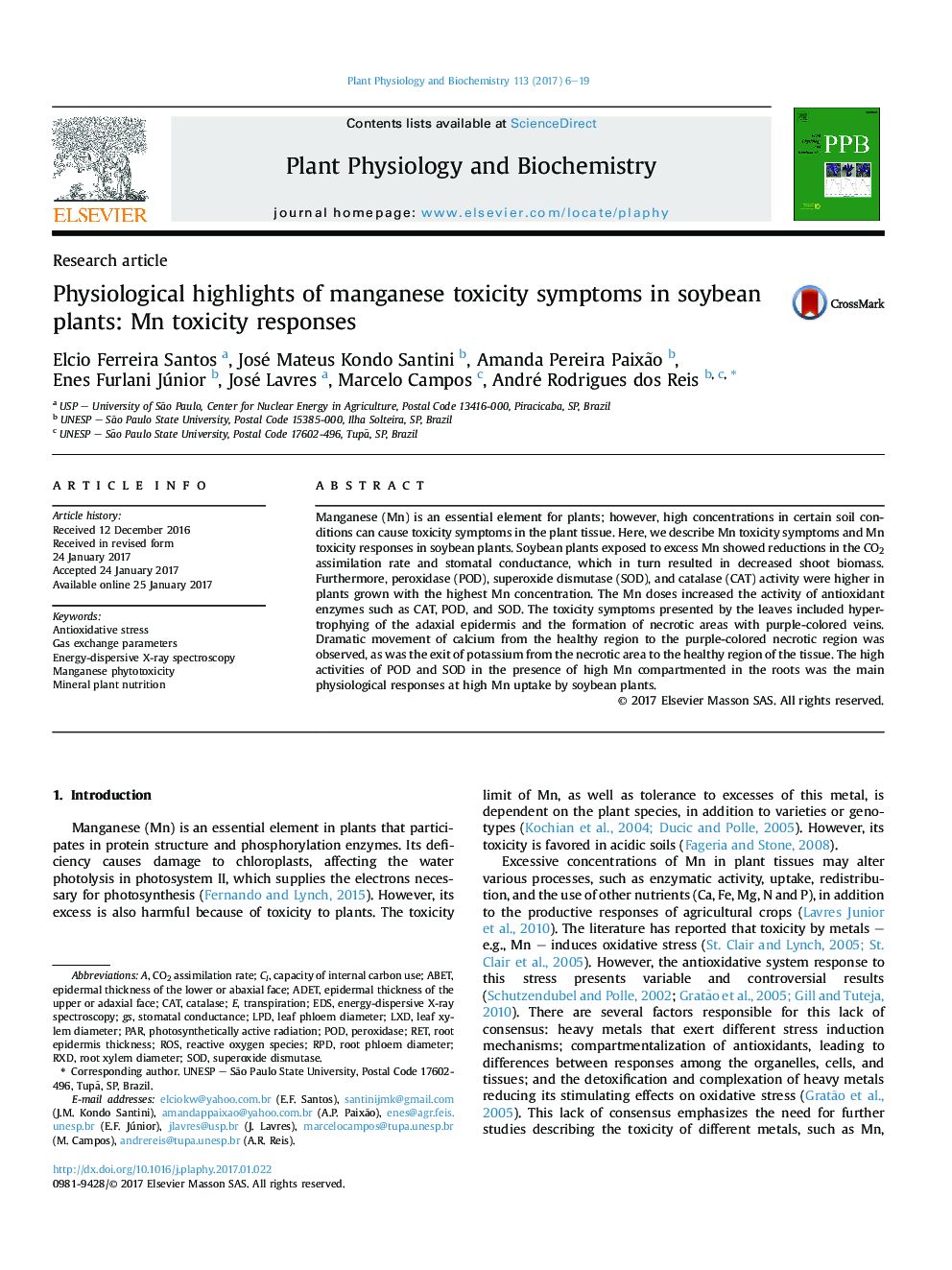| Article ID | Journal | Published Year | Pages | File Type |
|---|---|---|---|---|
| 5515591 | Plant Physiology and Biochemistry | 2017 | 14 Pages |
â¢We demonstrated Mn toxicity responses and symptoms in soybean.â¢Excess of Mn reduced the CO2 assimilation rate and stomatal conductance.â¢Antioxidant enzymes increased in roots under excess of Mn.â¢We described the distribution of nutrients in soybean leaf under Mn toxicity.â¢Calcium move dramatically from the healthy to necrotic tissue region under high Mn.
Manganese (Mn) is an essential element for plants; however, high concentrations in certain soil conditions can cause toxicity symptoms in the plant tissue. Here, we describe Mn toxicity symptoms and Mn toxicity responses in soybean plants. Soybean plants exposed to excess Mn showed reductions in the CO2 assimilation rate and stomatal conductance, which in turn resulted in decreased shoot biomass. Furthermore, peroxidase (POD), superoxide dismutase (SOD), and catalase (CAT) activity were higher in plants grown with the highest Mn concentration. The Mn doses increased the activity of antioxidant enzymes such as CAT, POD, and SOD. The toxicity symptoms presented by the leaves included hypertrophying of the adaxial epidermis and the formation of necrotic areas with purple-colored veins. Dramatic movement of calcium from the healthy region to the purple-colored necrotic region was observed, as was the exit of potassium from the necrotic area to the healthy region of the tissue. The high activities of POD and SOD in the presence of high Mn compartmented in the roots was the main physiological responses at high Mn uptake by soybean plants.
Graphical abstractDownload high-res image (511KB)Download full-size image
